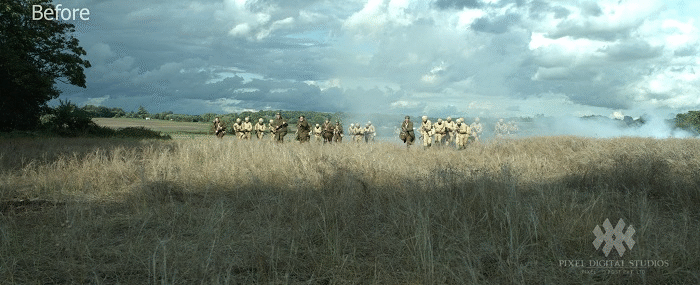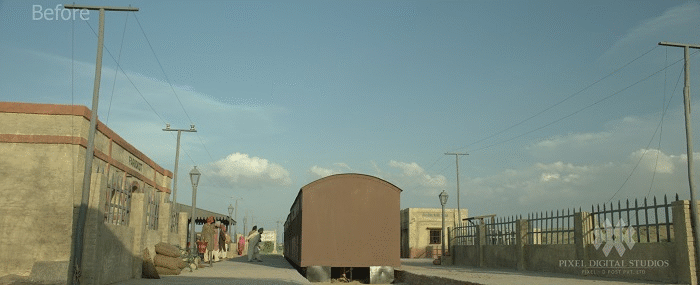
Mumbai-based VFX studio Pixel D must be coming off the back of one of its busiest periods yet. Having delivered over 1600 shots within a span of three months, Punjabi films Sajjan Singh Rangroot and Subedar Joginder Singh opened in cinemas recently to a visual nirvana that isn’t commonly seen in indigenous productions from the region.
Biographies based on Sikh militants of the same name, the movies probe various events of the World War I and the Sino-Indian war through gripping battle sequences, brought about by beautifully crafted visual effects that inject realism to the proceedings.
VFX supervisor K V Sanjit opens up to Animation Xpress on what went behind the scenes in pulling it all off. But first, here’s how the Pixel D got associated with the productions – “Pixel D was associated with director Pankaj Badra for his previous films like Bambukat and Channa Mereya, and also with director Simerjit Singh for Angrej and Nikka Zaildar.
“So Pixel D were accustomed to their work and when each of them set out on their latest assignments, we’re entrusted the responsibility again.”
Even if both films had a similar warring background, Rangroot is set in the 1940s whereas Subhedar is shown to transpire in 1962. This gave scope for subtle differences in the settings of both, and Sanjit explains how they went about it. He says, “Both the directors were very clear about what they want. The concepts are based in different eras. Rangroot was happening during World War I while Joginder Singh was based on Sino-Indo war 1962. So the war planes, machineries and other battle equipments were completely different from each other.”
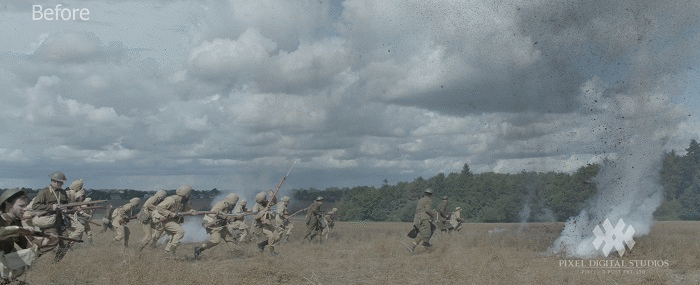
“Before commencing the work, we identified the differences of each as the graph of war sequences are not identical.”
Pixel D delivered 600 and 1000 VFX shots respectively, all within a clenched schedule spread across only three months with three shifts.
Delving more into the technical nitty-gritties, Sanjit takes us through the mechanics for the scenes in either films – “In Rangroot, there is a sequence were the soldiers walk through the rubbles of a town. Here, the entire city can’t be erected practically. So its been shot in normal old town with the characters trudging along the streets. Rest everything was created.”
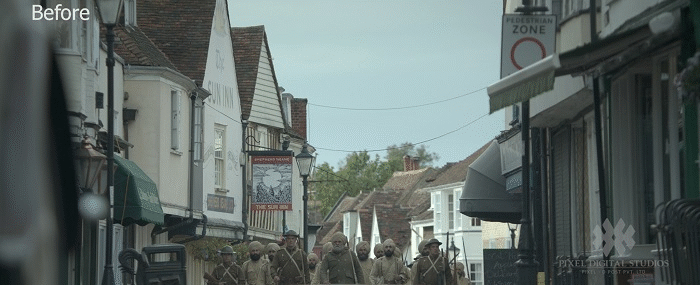
“Even DI was happening in Pixel D only, So DOP Vineet Malhotra wanted specific colour scheme be maintained for this project. After a brief discussion, we conclude the concept of doing VFX on graded footage just to make sure the essence of tone should not be compromised once it’s done. We maintain the same color scheme and ensure all our effects should match as per the grade and the results were outstanding.”
And what about Subhedar? “Here, there are three different war sequences Kashmir, Burma and Sino-Indo war. We used CG flights and blast in the war zone. As the flight neares the war zone, its starts firing. These firings and the blasts were done entirely in CG.”

“There is also song sequence where we need to create period steam engine. For the compartment interior they have erected a set and for the exterior we have created the entirely detailed period train and animated for all the exterior shots. Client was very specific about its detail since its too close from the camera. The shots of wheels are tight close-ups are also been done in CG.”
When asked which project was the more challenging, Sanjit explains both were equal in that regard as it came with its own set of challenges, and posed great difficulties while pulling it all off. 3D projection mapping, 3D match-move, Houdini smoke and blast, Z brush models, depth matte painting and color graded VFX layer matching were all carried out in the process.
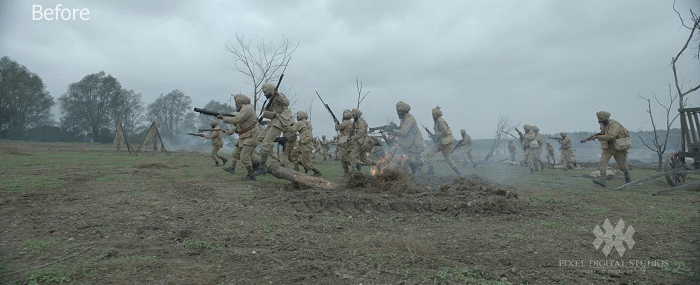
Sanjit and team thrived in the plumb creative liberty afforded, and also goes on to reveal how the directors helped foster the post-production work. He recalls, “We have full creative freedom and in fact we also got creative help from both the project to execute it on time. For Rangroot, DOP Vineet Malhotra helped us a lot in making us understand the process of the sequence. For Joginder Singh, creative director Rasheed was backing us to get it approved shot wise to proceed next stage ahead.”
Between the jigs and the reels, Pixel D strung it all together. And the support from each of the directors cannot be overstated. “Our best experience was both the directors knew the process of VFX very well, which helped us a lot in achieving the quality output. Director Pankaj Badra knows the where to start and where to end. He is so precise in each and every frame. Director Simerjit Singh wants everything to be blended the way its been shot. He believes VFX should not look like VFX.”
